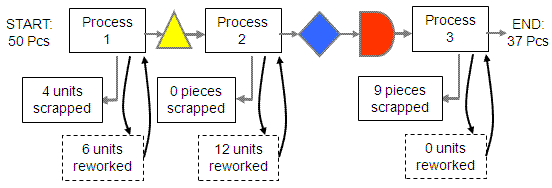

The act of involuntarily suspending a running process is called preemption. In preemptive multitasking, the scheduler decides when a process is to cease running and a new process is to resume running. Linux, like all Unix variants and most modern operating systems, provides preemptive multitasking. Multitasking operating systems come in two flavors: cooperative multitasking and preemptive multitasking. Deciding what process runs next, given a set of runnable processes, is a fundamental decision the scheduler must make. If there are more processes than processors in a system, some processes will not always be running. To best utilize processor time, assuming there are runnable processes, a process should always be running. By deciding what process can run, the scheduler is responsible for best utilizing the system and giving the impression that multiple processes are simultaneously executing. The scheduler is the basis of a multitasking operating system such as Linux.
THROUGHPUT WITH TIMESLICE CODE
The scheduler (or process scheduler, as it is sometimes called) can be viewed as the code that divides the finite resource of processor time between the runnable processes on a system.

It is a useful measurement to check the load capacity of the server when we are putting the load in the application with some users.The scheduler is the component of the kernel that selects which process to run next. It signifies the number of transactions or requests that can be made in a given period of time. If we are using the 10 threads example here and Ramp up period is 100 seconds, then in JMeter will take 100 seconds to get all 10 threads up and runningĮach thread will start running 10 (100/10) seconds after the previous thread was begun.īasically, Throughput is one of the important performance indicators when we are evaluating the application performance. Ramp up will tell us how much time the chosen number of threads will run on the server. of threads * Loop count)/Ramp up time, we can check throughput with this calculation Here we will calculate the throughput with the help of the below formula:. Let's suppose we have a test plan with the 100 threads with the Ramp up 5 seconds Let’s take an example to understand the throughput in detail:. There are different ways to consider the performance of the application like response time, Latency etc. Throughput is considered as the number of requests sent to the server per second. Throughput is the significant way of finding the performance of the application, higher the throughput good result is considered although throughput may vary from the number of threads per second. It is the term in the JMeter we use it to measure the performance on the server by putting the load on the server or in another way we can say it is the term which tells us the ability of the application to handle the load.

Total number of requests in a given time or TPS (transaction per second)

Throughput is one of the components in the JMeter of non-functional requirement which we can consider under the perfromance testing category and its formula to calculate is:. Here we will understand what is throughput in the Jmeter.


 0 kommentar(er)
0 kommentar(er)
